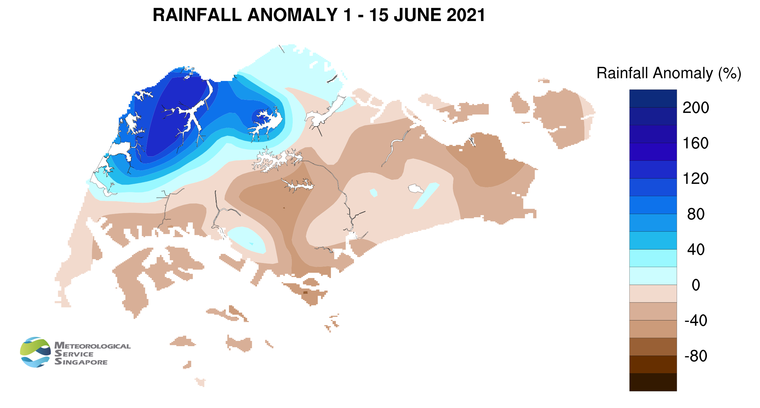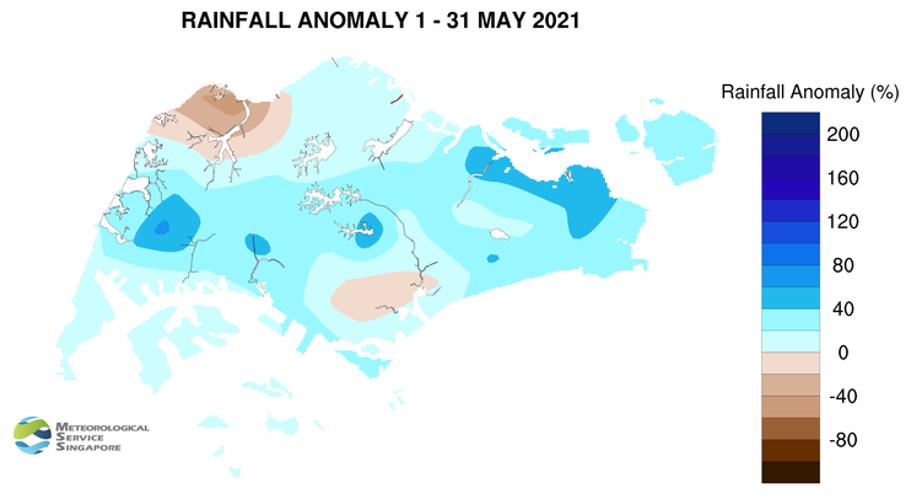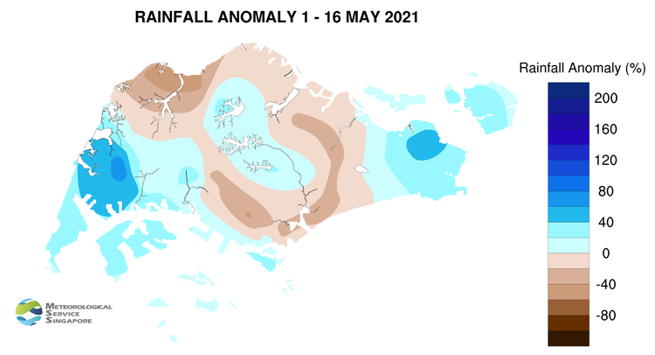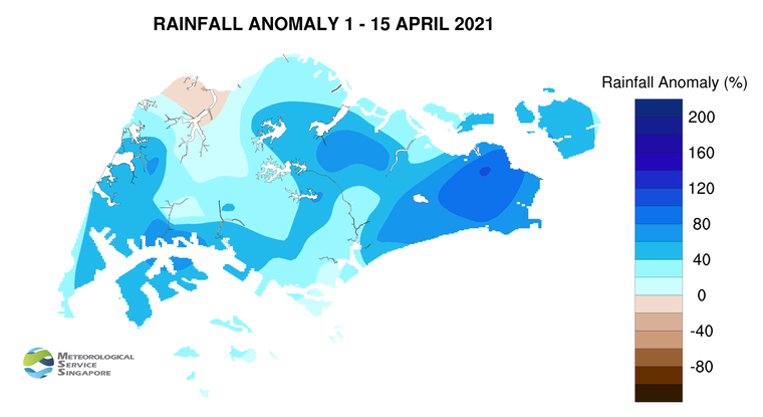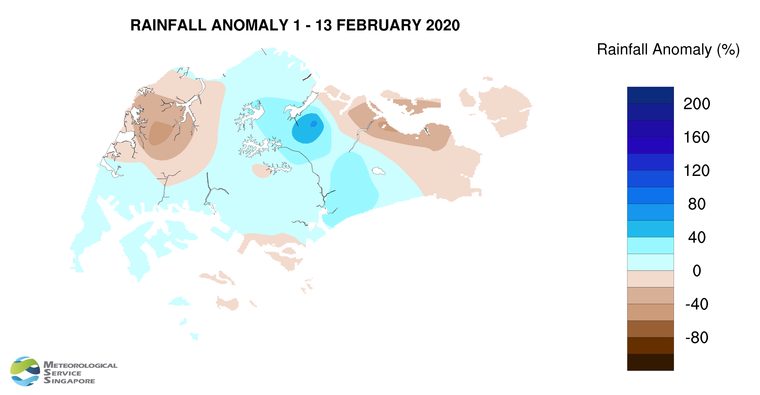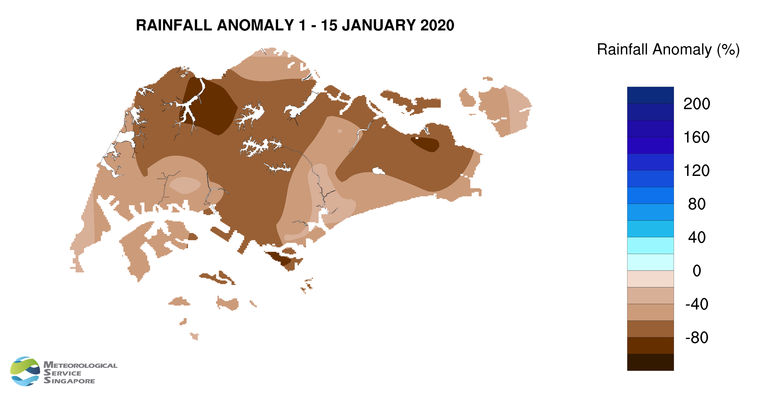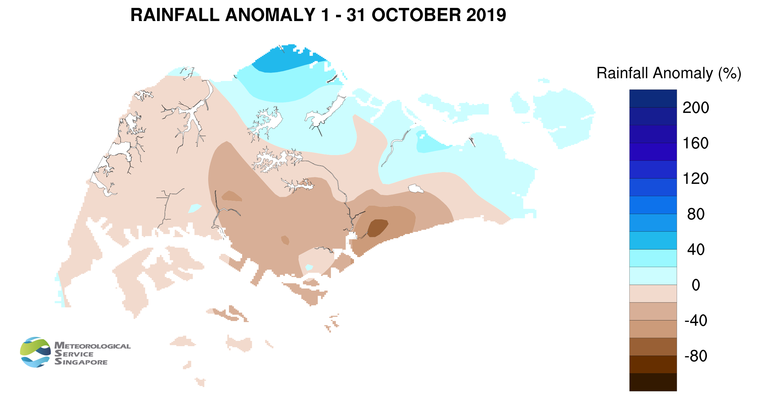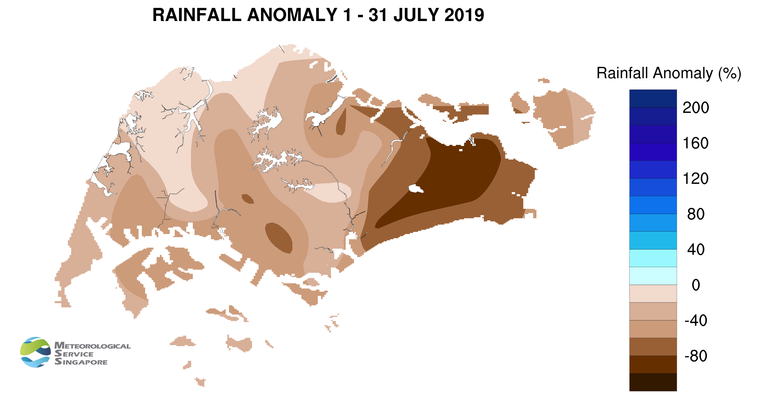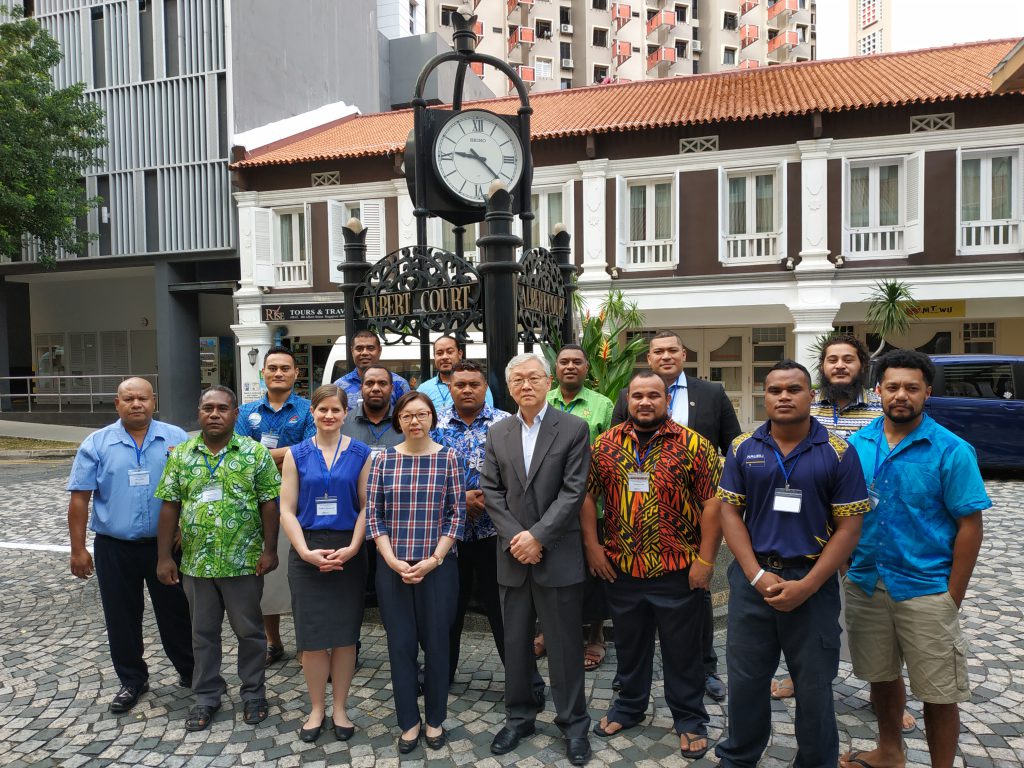Singapore, 16 Jun 2021 – The prevailing Southwest Monsoon conditions over Singapore and the surrounding region are expected to persist for the rest of June 2021. During this period, the monsoon rain band is forecast to lie further north of the Equator, and the low-level winds are expected to blow from the southeast or southwest.
2 The warm and humid conditions in the first half of June 2021 are forecast to continue for the rest of the month. During the second half of June 2021, the daily temperatures are expected to range between 25°C and 34°C on most days and the daily maximum temperature could reach around 35°C on days where there is little or no rain. Warm and humid conditions can also be expected on some nights when prevailing winds from the southeast or south blow warm and humid air from the sea. On these nights, minimum night-time temperatures of up to 28°C can be expected, particularly over the south-eastern parts of the island.
3 On a few days in the early part of the coming fortnight, a mass of dry air from the Indian Ocean is forecast to move over the equatorial Southeast Asia region. The passage of dry air is expected to bring fair and warm weather over Singapore and the surrounding region. On some days during the fortnight, localised short-duration thundery showers are forecast over parts of the island in the late morning and early afternoon due to strong day-time heating of land areas. On one or two days, widespread thundery showers with gusty winds due to Sumatra squalls are forecast between the pre-dawn hours and morning. Overall, the rainfall for June 2021 is expected to be below normal over some parts of Singapore.
4 For updates of the daily weather forecast, please visit our MSS website (https://www.weather.gov.sg), NEA website (www.nea.gov.sg), or download the myENV app.
REVIEW (1 – 15 June 2021)
5 In the first half of June 2021, the light and variable winds over Singapore and the surrounding region strengthened to blow from the southeast or southwest. This shift in the winds in early June 2021 signalled the end of the inter-monsoon period and the start of the Southwest Monsoon season.
6 During the first fortnight of the month, thundery showers fell mostly over the western half of the island in the late morning and afternoon due to strong solar heating of land areas coupled with localised convergence of winds. There were also a few days when thundery showers fell during the night and in the pre-dawn hours. On 15 June 2021, moderate to heavy thundery showers fell mainly over the western and northern parts of the island in the afternoon. The daily total rainfall of 93.8mm recorded at Mandai that day was the highest daily rainfall for the first half of June 2021.
7 The first fortnight of June 2021 was generally warm. There were 9 days where the daily maximum temperature was above 34°C. The highest daily maximum temperature of 35.5°C was recorded at Marina Barrage on 4 June 2021. There were also a few warm nights, particularly over the southern parts of the island where the minimum night-time temperatures ranged between 28.0°C and 29.2°C.
8 In the first half of June 2021, rainfall was below average for most parts of Singapore except in the north-western parts of the island where rainfall was above average. The highest rainfall anomaly of 138% above average was recorded at Choa Chu Kang. The anomaly was lowest at Sentosa at 61% below average.
CLIMATE STATION STATISTICS
Long-term Statistics for June
(Climatological reference period: 1991 – 2020)
| Average daily maximum temperature | 31.9 °C |
| Average daily minimum temperature | 25.7 °C |
| Average monthly temperature | 28.5 °C |
| Average rainfall | 135.3 mm |
| Average number of rain days | 13 |
Historical Extremes for June
(Rainfall since 1869 and temperature since 1929)
| Highest monthly mean daily maximum temperature: | 33.2 °C (1997) |
| Lowest monthly mean daily minimum temperature: | 23.2 °C (1965) |
| Highest monthly rainfall ever recorded: | 378.7 mm (1954) |
| Lowest monthly rainfall ever recorded: | 21.8 mm (2009) |
